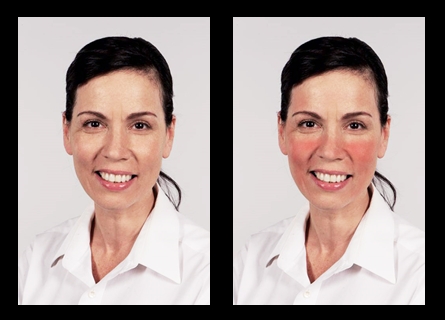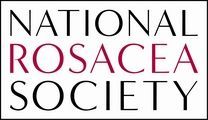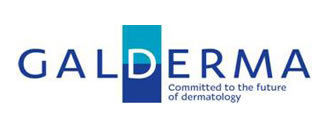BARRINGTON, Ill.--(BUSINESS WIRE)--A successful start to a relationship – professional or personal – often depends on leaving a lasting and positive first impression. But a new survey has found that people with the common skin condition rosacea often make an unfairly negative first impression on Americans. Shy, nervous, stressed - these are common adjectives that respondents used to describe their perception of someone with redness on their face, without knowing anything else about them. The unique digital perception survey, developed in partnership between the National Rosacea Society (NRS) and Galderma Laboratories, L.P., contrasted images of women and men with signs of facial redness of rosacea (an inflammatory skin condition characterized by redness, bumps and pimples) and images of women and men with clear skin.
One of two surveys was given to more than 1500 people: the first survey was given to people who have rosacea and the other to those who do not. The surveys found that based on first impressions, when it comes to positive attributes such as confidence, health and charisma, those with facial redness were consistently ranked lower than their clear-skinned counterparts. As part of the general population survey, adults were asked to give their opinions of women and men based solely on photographs of their faces: half of the photographs featured the women and men with clear skin and the other half was digitally enhanced to simulate facial redness associated with rosacea on their faces.
Facial Redness of Rosacea Often has Impact on Perception of Personality Traits
According to the survey results, those with facial redness due to rosacea are more likely than those with clear skin to be seen as shy and quiet (22% vs. 17%) or nervous (18% vs. 11%). Survey respondents from the general population also thought that rosacea sufferers were less likely to be outgoing (38% vs. 27%) and less likely to be in a relationship (26% vs. 17%). In comparison, those with clear skin were more likely than those with rosacea to be seen as relaxed (77% vs. 64%) or charismatic (75% vs. 63%).
"The survey results show how difficult it can be for rosacea sufferers to be confident in their own skin and to immerse themselves in social situations," said Samuel Huff, executive director of the National Rosacea Society. "The National Rosacea Society encourages people to educate themselves about this common yet often misunderstood skin condition and to get treatment early on. Overall, rosacea's emotional impact on patients appears to increase as symptoms progress.”
Facial Redness of Rosacea Often Prompts Insecurity in Social Situations
Facial redness is not only the most commonly reported symptom of rosacea, it is also ranked as one of the hardest things about having rosacea by 83% of sufferers. Rosacea sufferers often worry that they may be perceived by others as overheated (50%), embarrassed (48%) or sunburnt (43%), and over half of rosacea sufferers (58%) are concerned about their face turning red when speaking in front of a group.
Moreover, when trying to make a good impression, personally and professionally, more rosacea sufferers would be concerned about their face being red (56%) than being unable to come across as a good fit for a job (47%), saying something inappropriate or offensive (20%), or having body odor (18%). Nearly two-thirds of rosacea sufferers (63%) have avoided situations because they felt uncomfortable or embarrassed about how their skin looked due to facial redness.
Many people who don’t have rosacea think that redness is a sign of poor health. Those with clear skin are more likely to be seen as healthy (65% vs. 37%) or in shape (49% vs. 33%) than those with facial redness. That might be because Americans are more likely to assume people with rosacea are sunburnt (58% vs. 3%) or overheated (50% vs. 5%) compared to people without the condition.
Finding the Right Treatment is Difficult
Two in five sufferers say that one of the hardest things about having rosacea is finding the right treatment. Although 79% of respondents with rosacea say that they currently do something to remedy facial redness, over half of them (54%) are resorting to covering up their condition with makeup instead of treating it. Over the counter products satisfy less than half of users (45%).
“The issue we see with many rosacea sufferers is that they do not recognize the symptoms and miss out on getting effective treatment for the skin condition,” says Dr. Richard Fried, a dermatologist and psychologist in Yardley, Pa. “The persistent facial redness of rosacea often causes embarrassment and anxiety with sufferers, and the survey results provide proof that those affected actually avoid going to social events and miss out on special occasions. People should be taking advantage of the effective prescription treatments that are available to them; without proper treatment, rosacea can worsen over time and potentially lead to depression.”
About the Surveys
The surveys were conducted between February 6 and February 20, 2014. The sample for the Rosacea Sufferers survey consisted of 518 American between the ages of 30 and 50 who have been diagnosed with rosacea, resulting in a margin of error of +/- 4.3 percent. The sample for the General Population survey consisted of 1,015 nationally representative Americans ages 18 and over, using an email invitation and an online survey. Quotas are set to ensure reliable and accurate representation of the entire U.S. population age 18 and over. The margin of error for the general population survey is +/- 3.1 percent. The margins of error for any subgroups will be slightly higher for each survey.
Results of any sample are subject to sampling variation. The magnitude of the variation is measurable and is affected by the number of interviews and the level of the percentages expressing the results.
What is Rosacea?
Rosacea is a chronic, inflammatory and vascular disorder affecting the face. Redness, visible blood vessels, bumps and blemishes typically appear in the middle of the face (forehead, nose, cheeks) after age 30 in men and women. Rosacea affects an estimated 16 million Americans. Common triggers for the condition may include sun exposure, emotional stress, hot weather, wind, heavy exercise, alcohol, spicy foods and potentially increased demodex mites, the microscopic parasites that are normal inhabitants of facial skin. Because of the physical manifestation of rosacea on the face, the condition can cause embarrassment, anxiety and frustration and may have a negative impact on the patients’ social lives. Stinging, burning and sensitivity of the skin are common, and in some cases, the eyes can become red, dry and swollen. If left untreated, rosacea may worsen. If people suspect that they might have rosacea, they should visit their dermatologist or healthcare provider for proper diagnosis and treatment. For more information, visit www.RedIsWrong.com.
About the National Rosacea Society
The National Rosacea Society (NRS) is the world's largest organization dedicated to improving the lives of the estimated 16 million Americans who suffer from this widespread but poorly understood disorder. Through education and advocacy, its mission is threefold: to raise awareness of rosacea, to provide public health information on the disorder, and to encourage and support medical research that may lead to improvements in its management, prevention and potential cure. Since 1992, the NRS has made a difference in the way rosacea patients are treated and the way this widespread disorder is perceived and understood. Information and materials are available on the society's Web site at www.rosacea.org.
About Galderma
Galderma is a global company founded in 1981 committed to delivering innovative medical solutions to meet the dermatological needs of people throughout their lifetime while serving healthcare professionals around the world. The company has 33 wholly-owned affiliates with a worldwide network of distributors and more than 5,000 employees. Galderma’s extensive product portfolio is available in 80 countries and treats a range of dermatological conditions including: acne, rosacea, onychomycosis, psoriasis & steroid-responsive dermatoses, pigmentary disorders, skin cancer and medical solutions for skin senescence. With approximately 19% of revenues invested each year to discover and develop new products and access innovative technologies, the company is one of the world’s leading investors in dermatology R&D. Five state-of-the-art R&D centers and five manufacturing sites are dedicated to providing a wide range of innovative medical solutions which meet the highest standards of safety and efficacy.
For more information, please visit Galderma’s website www.galderma.com.
The survey was sponsored by Galderma Laboratories and developed in partnership with the National Rosacea Society.






